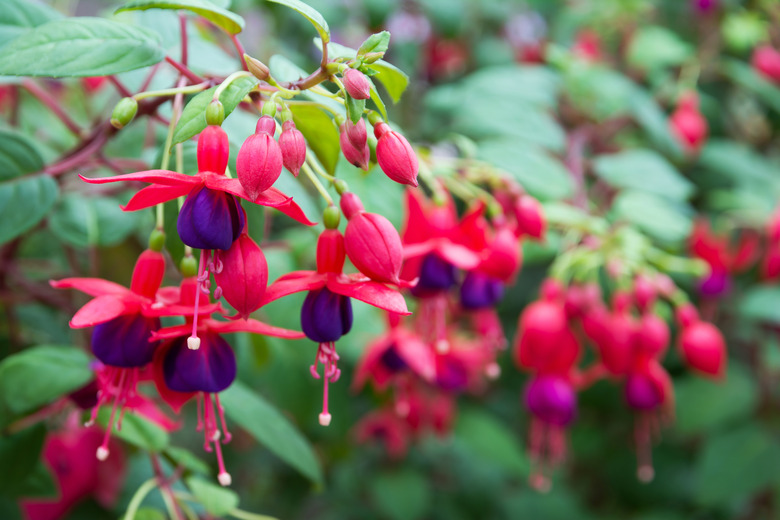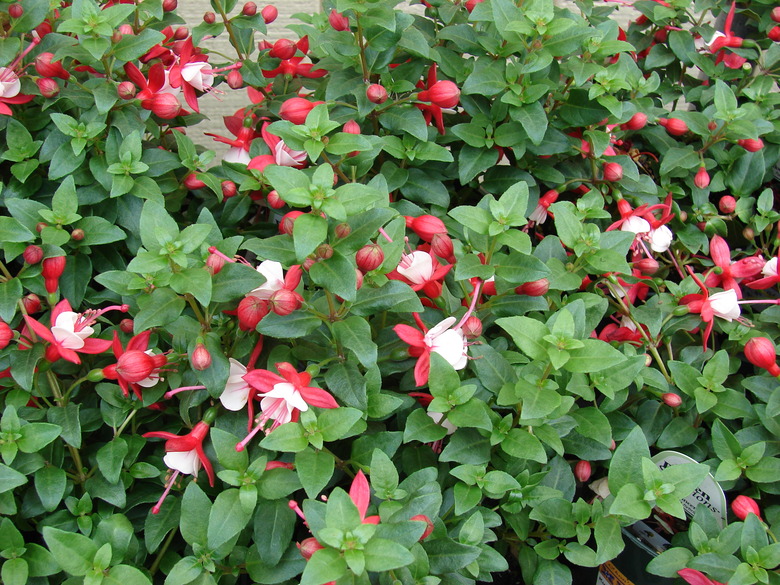How To Care For Fuchsia
With their graceful droop, complex petal structure and stunning color, fuchsias make the shade garden pop.
Although they are easy to grow, you shouldn't just plant them and forget them. These warm-loving beauties won't survive winter and need a serious drink of water during dry summers, but they are worth it.
The most common type found in nurseries in the U.S., the annual fuchsia also called lady's eardrops (Fuchsia x hybrida; USDA hardiness zones 10B to 12b) has hundreds of cultivars. In fact, peruse any nursery's shade garden selections, and you'll have to choose between a handful of white, purple and brilliant pink colors in an array of forms.
Fuchsia in the Landscape
Whether you have propagated your fuchsia plants from cuttings or purchased seedlings, spring is the best time to plant.
The first place to start is to find a nice, semi-shady spot or even one in full shade. Ensure that the spot has well-draining soil, with a pH on the acidic side, i.e. under 6.0. The soil can be loamy or a little sandy.
If you plant your fuchsia in containers, you can move the pot around to more advantageous positions as the growing season advances.
Companion Planting With Fuchsia
If planting directly in the garden, consider companion plants for your fuchsias. One standout choice is hosta, with its sumptuous leaves that can frame and complement the fuchsia's flowers.
In addition, consider coral bells, begonia or rhododendrons (for their larger size), all of which will combine with fuchsia to create a tapestry of color.
Fertilizer and Irrigation
Fuchsias require a lot of food if they are to fulfill their promise. While they are continual bloomers, they will bloom less if they run out of oomph. They also are not heat- or drought-tolerant, so they need a regular drink of water.
Give Them Food
During the growing season, provide them with a soluble, balanced fertilizer every two to four weeks. This means that the three numbers on the fertilizer solution should be roughly equal, for instance, 10-10-10, which represents 10% each of nitrogen, phosphorus and potassium.
If you plan to bring them indoors before frost to overwinter them for next year, stop feeding them about two weeks prior.
Give Them Drink
Water your fuchsias regularly during dry weather whenever the soil surface is dry. Fuchsias can't tolerate standing water though, so avoid overwatering. Similar to fertilizer, slow down watering in the fall if you are planning to bring your plants indoors.
Tip
Be sure to stop fertilizing your fuchsia two weeks prior to bringing them indoors for overwintering.
Flowering and Pruning
As your fuchsias grow, prune young plants back a bit to encourage bushier growth and heavier flowers. When flowers die, prune them off, along with any dead or dying branches, to ensure the plant can focus its energies on developing new blooms.
At the end of the season, prune them to about 6 inches tall before bringing them in for the winter.
Pests and Environmental Issues
- **Hot and Dry Periods:** If your location experiences a particularly hot and dry period, fuchsia flowers may not be able to fully develop. If they fade quickly and drop off the plant, this is likely why.
- **Aphids and Whiteflies:** The most typical pests to target fuchsias are aphids and whiteflies. If you observe these pests,
the best course of action is to hose them off. If you have a heavy infestation, spray them with insecticidal soap.
- **Fungal Diseases:** Fuchsias also can be bothered by fungal diseases, including fuchsia rust and botrytis blight. Both can usually be controlled by ensuring that the plants are not too crowded and by practicing good garden sanitation—picking up plant debris from the ground and pruning stems and branches so the plants receive more air circulation.

